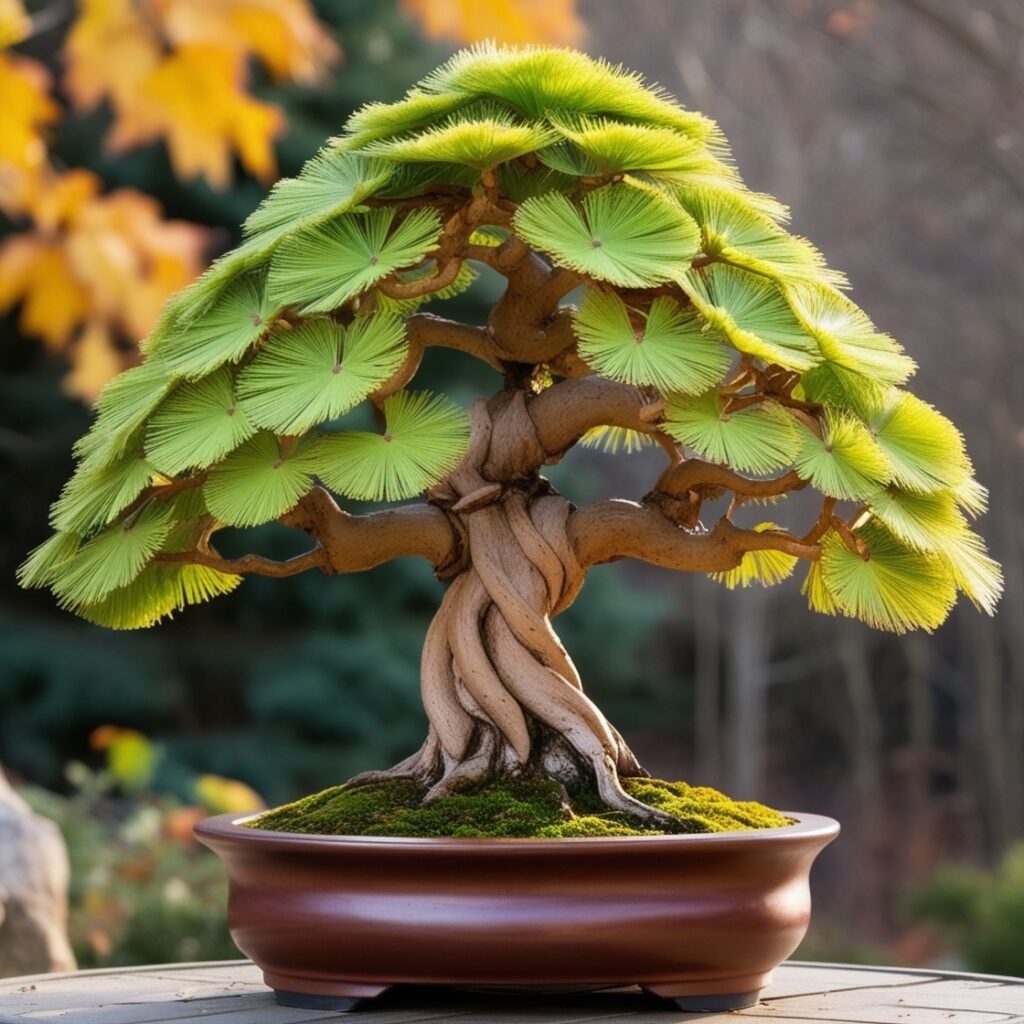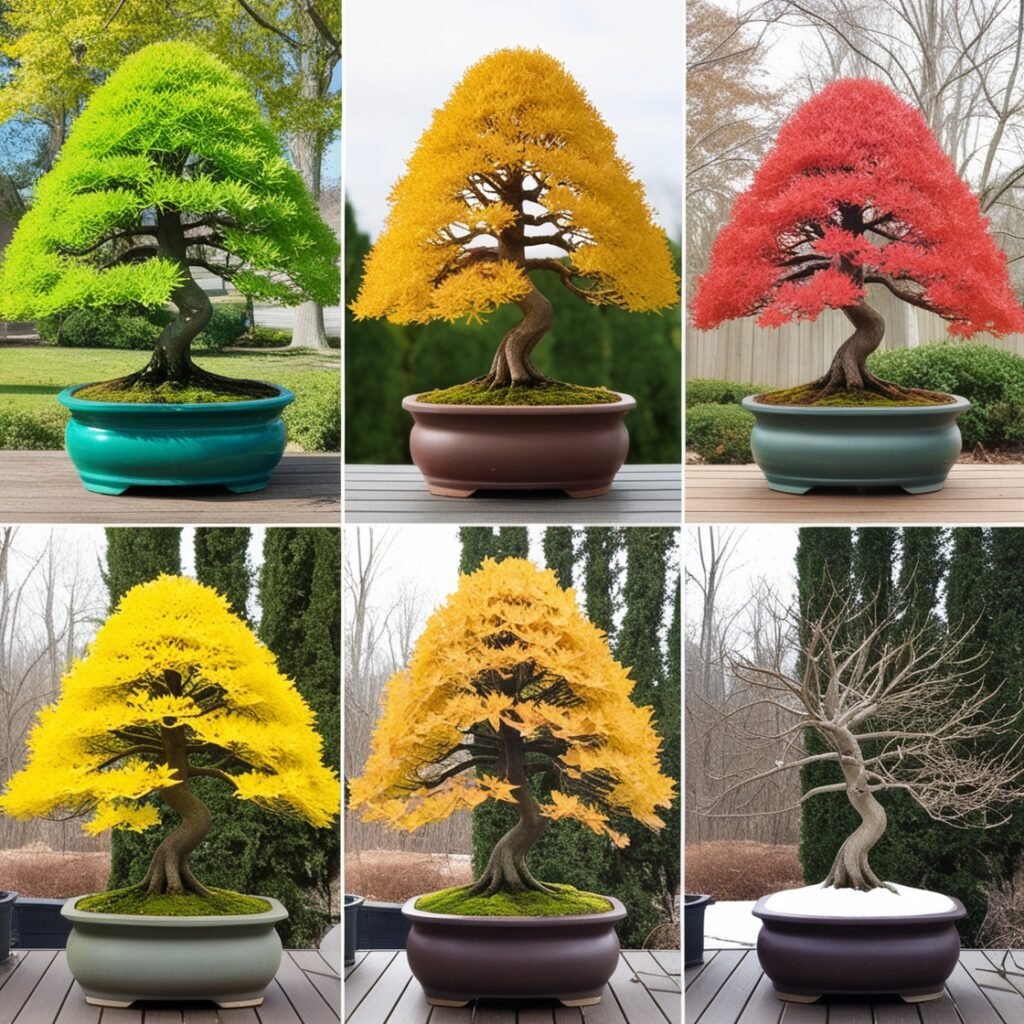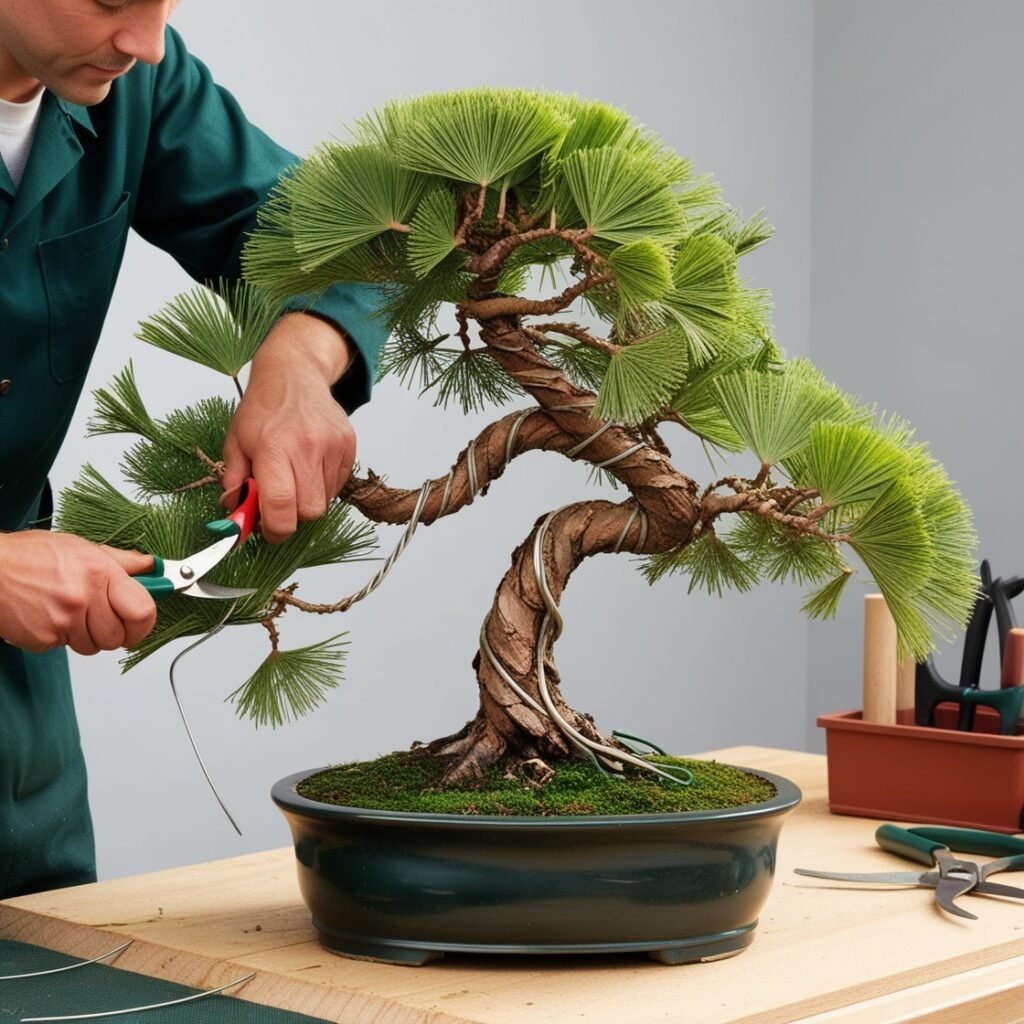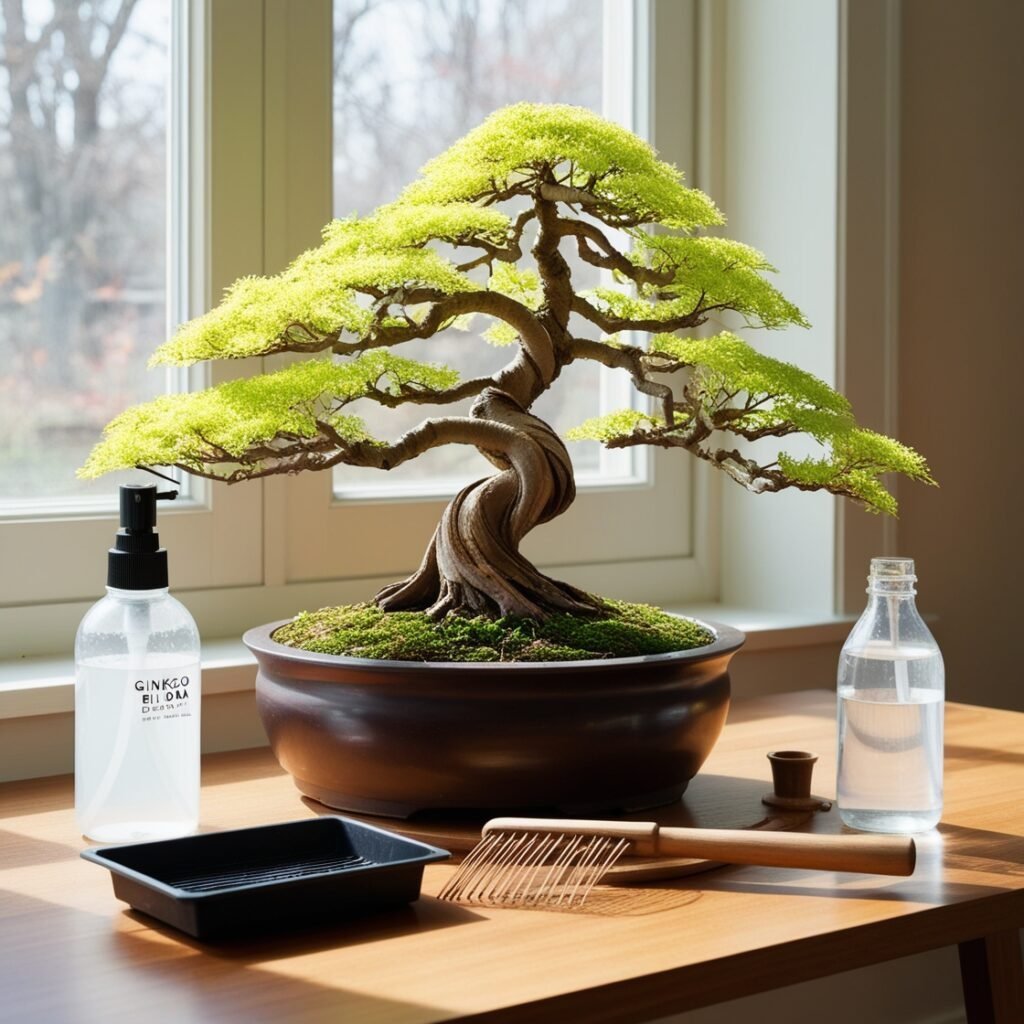
Ginko biloba bonsai is one of the oldest living trees, which is commonly called a “living fossil.” The Ginkgo Biloba Bonsai captures every distinctive quality of the full-sized tree with golden autumn color, fan-shaped leaves, and sturdy constitution.
Regardless, the Ginkgo Biloba Bonsai is a unique and valuable addition to any bonsai collection. We highlight its historical significance and the beauty of its distinctive leaves and form.
In this article, we will cover all the key details about growing and maintaining your Ginkgo Biloba Bonsai, from learning what makes it unique to understanding how you can maintain it effortlessly.
What is Ginkgo Biloba Bonsai?
The Ginkgo Biloba Bonsai is a miniature version of the typical Gaga tree. It has been pruned and shaped to act as a bonsai. From May to June, as spring arrives, the Ginkgo Biloba tree begins to sprout bright green leaves that alternate; come summer or July/Aug, it grows many more sets of leaves that resemble fans, suggesting that they have grown taller but are only aging on their bonsai journey.
However, the Ginkgo Biloba Bonsai allows you to enjoy the two traits of this old tree in any room in your house or even out in the garden while practicing bonsai art. The Ginkgo is a deciduous tree, which means that in the wintertime it will shed its leaves and add seasonal interest to your garden.
Characteristics of Gingo Biloba Bonsai

The Ginkgo Biloba Bonsai has unique characteristics that separate it from other types of bonsai. Among other things, the Ginkgo Biloba Bonsai expresses its unique characteristics in the following ways:
- Fan-Shaped Leaves
There are two main things that make the Ginkgo Biloba Bonsai stand out: its fan-shaped leaves. These leaves are leathery and grow in groups along the branches. It has a bright green leaf in the spring and summer, but when autumn rolls around, it turns yellow, making this tree something special.
- Seasonal Changes
The Ginkgo Biloba Bonsai undergoes a transformation throughout the year. This plant, as a deciduous tree, undergoes dramatic transformations throughout the year. It has fresh green leaves in the growing season, and they turn to gold with autumn. During winter, the tree sheds its leaves, revealing bare branches that showcase its structural elegance.
- Durability and Longevity
A tough plant, the Ginkgo Biloba Bonsai is virtually free of diseases and pests and can survive in many different growing mediums. Chinese Elm bonsai, an adaptable tree that can live in mild to urban climates, is loved by both beginner and advanced enthusiasts.
A Step-by-Step Guide to Growing Ginkgo Biloba Bonsai

To ensure the beautiful and healthy growth of your ginkgo biloba bonsai, you must adhere to these guidelines and maintain them all.
- Light Requirements
To be OK, Ginkgo Biloba Bonsai Trees need a lot of sunlight. A good location where the Bonsai tree can receive 6 to 8 hours of direct sunlight is essential. This tree grows best outdoors, but it can also be kept indoors by a sunny window or under grow lights, particularly in the winter when temperatures drop.
- Watering
The Ginkgo Biloba Bonsai requires moderate moisture, though it should never be standing in waterlogged soil. When the top inch of soil has dried out completely, water it. Make sure water comes out the pot bottom when watering. It prevents the roots from soaking, but still allows them to receive proper hydration! Reduce the amount of water during winter, as long as the soil doesn’t dry out entirely.
- Soil Requirements
Well-draining bonsai soil is the ideal medium for Ginkgo Biloba Bonsai. They need bonsai soil that drains and aerates well, usually consisting of akadama pumice or lava rock. However, the soil must also hold some moisture and not be too wet, which can lead to root rot.
- Repotting
In early spring, repot the Ginkgo biloba Bonsai every 2 or 3 years before new growth appears. This will stop the tree from becoming root-bound and revitalize the earthly climate.
- Temperature and climate
Ginkgo biloba is a tree very resistant to temperature variations. It does well in a temperate climate and tolerates high summer and low winter temperatures.
- Winter care
It is critical to take necessary precautions to protect the bonsai from severe frost in colder regions. To ensure it survives planting, keep your tree and soil in a garage or wrapped with insulating materials to protect from freezing temperatures.
- Outdoor preference
The Ginkgo may grow indoors; nevertheless, it truly prefers being outside to feel the seasonal transitions and thereby develop a totally healthy tree.
- Fertilizing
When the ginkgo biloba is fully grown, it is best to fertilize this bonsai on a regular basis. Apply a balanced and slow-release fertilizer. Apply fertilizer monthly during the growing season. When your tree is dormant, do not fertilize it in the fall and winter.
Pruning and Shaping Your Ginkgo Biloba Bonsai
Cutting and trimming your Ginkgo Biloba Bonsai is an essential part of taking care to keep it in a low-growing shape with extreme natural beauty. The Ginkgo naturally has an upright spreading growth habit, so you need to prune it fairly regularly in order to control its shape.
- Structural Pruning
The best time to train bonsai is in early spring, before new growth begins. Periodically remove old leaves and perform structural pruning as needed so that a branching pattern develops naturally, rather than forcing it unnaturally with wires. Ginkgo trees take a long time to grow, so avoid overpruning.
- Leaf Pruning
Among bonsai species, Ginkgo Biloba Bonsai has huge leaves. Leaf reduction by either defoliation or removing some larger leaves in the summer will also result in slightly smaller leaf growth and correcting the tree proportion.
- Wiring
Another way to bend the branches of a Bonsai plant is by using wire, but in connection with Ginkgo Bonsai, you have to be careful that bending may cause leaves to break as they tend to be fragile. If you wire the tree, inspect the wire every so often to see if it isn’t biting into the bark. This can happen quickly with ginkgos, as their branches thicken significantly during the growing season.
Care for Ginkgo Biloba Bonsai in Different Seasons

Special care is needed for all plants in different seasons. Let’s know the details:
- Spring
Remove and replant: Spring is the ideal season for repotting and pruning. Once this happens, new growth will occur, and you can think about reshaping the tree and refreshing your soil.
More sun light: As the days get longer, ensure that your Ginkgo is basking in enough sunlight to promote healthy growth.
- Summer
Water well: Watch for the soil to dry, because it is more likely that you will need water during hot periods.
Fertilize: Continue fertilizing the tree on a monthly basis to ensure active growth during the juvenile period.
- Fall
Fall Color: In autumn, the Ginkgo Biloba Bonsai changes into a spectacular display of vibrant golden hues. After the leaves fall off, cut back on watering and prepare for dormancy.
- Winter
Keep frost-free: Ensure that the tree is kept above freezing temperatures, depending on your climate. Move it to the shelter or cover with an insulating material.
A minimum of water: During the dormant period, throw back a little, just not to completely dry out the root system.
Common Issues and Solutions
Although fairly tough and generally simple to look after, Ginkgo Biloba Bonsai may occasionally encounter challenges. Some common issues and resolutions are:
- Root Rot
Overwatered soil or poor drainage can cause root rot. To avoid root rot, use loose soil and make sure the top is dry between waterings.
- Pest Infestation
They are relatively pest- and scale free, but sometimes aphids like to attack this bauhinia. If you see pests, use insecticidal soap or neem oil on the tree.
- Leaf Scorch
Brown Edges on Leaves of Money Tree Direct sunlight is a common trigger, so if your tree receives too much sun or you forget to water it, it may develop brown edges. Transplant the Andernach tree to a location with filtered light; water it well on occasion.
Conclusion
The Ginkgo Biloba Bonsai is an amazing tree, and by growing one, you will have ancient historical beauty living in your home. This is certainly a stunning fall-colored tree with red, yellow, and orange leaves that has fan-shaped spiny leaves, which make it easier on the eye than most other bonsai plants.
With these Ginkgo Biloba Bonsai care tips, you can keep it healthy and flourishing for years.

